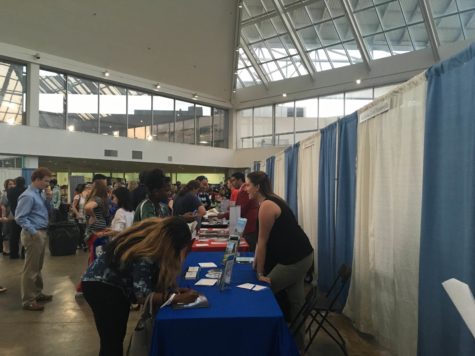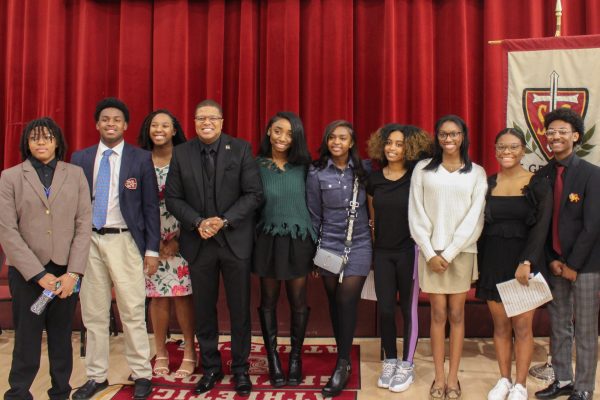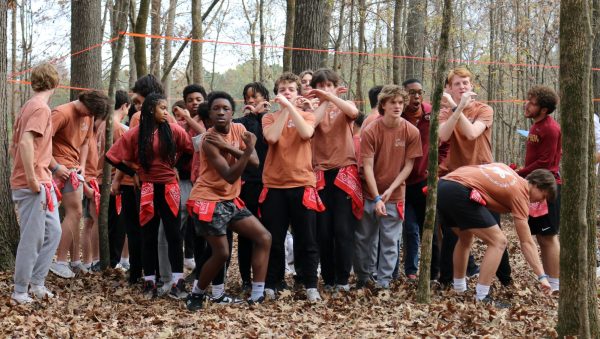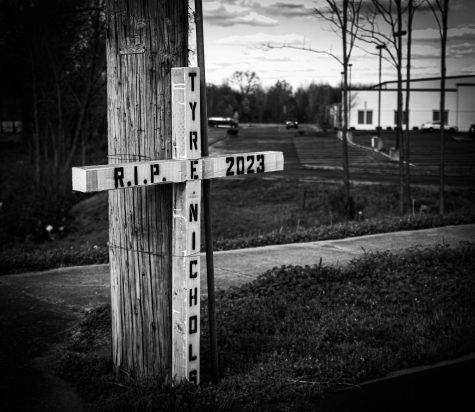It’s all about the money
How the rising cost of higher education is changing the college search
Junior Fe Novoa has spent hours looking at the Berklee College of Music’s official website over the past two months. She has researched their performance opportunities, admired their student life and examined every major they offer. Novoa loves everything about Berklee except the price. Tuition at Berklee is $61,000 a year.
“I would like to apply and audition,” Novoa said, “but the chances of me going there are really small.”
As an aspiring contemporary musician, Berklee is her dream college, and with good reason. According to College Magazine, Berklee College of Music was ranked the fourth best college for aspiring musicians in 2016 and had the most innovative undergraduate study of contemporary music, according to the The Best Colleges’ website.
Novoa entered the music scene in fifth grade when she began playing the drums. Two years ago, she joined Germantown School of Rock, a local music school that offers student musicians the ability to perform in public, and began playing in two or three shows per year.
With an admission rate of 32 percent, Novoa believes she has a good chance of being accepted but is worried about the role finances would play in her ability to attend.
“If I get into my dream school, I know I’m good enough to get in, but financials are not something that I can control, which is something that stresses me out even more,” Novoa said. “There’s nothing I can do to fix it and to make it better. I can work on my grades and get good test scores – that’s something in my control – so I’m definitely going to be more worried about affording it.”
Feeling the Pinch
Since the 1990-1991 school year, the net price of a college education has risen 194 percent for private universities and 274 percent for public universities, according to the College Board, making situations like Novoa’s more and more common.
Due to rising prices, there has also been an increase in the number of students who take out loans in order to pay for their education. The Institute for College Access and Success determined that 68 percent of college seniors in the Class of 2015 were in debt and that the average student with debt owed $30,100.
This is a situation senior Alton Stovall wants to avoid.
“I know that my mother went to college a very long time ago, and she only recently paid off her student loans. I know that loans are not something that just goes away,” Stovall said. “I heard that if you let them get out-of-hand or if you ask for too much, they can become a burden in the future.”
According to CNBC, 71 percent of individuals with student debt believe the cost of their monthly loan payments prevents them from buying a home, while 40 percent are forced to live with family members since they struggle to afford monthly rent payments and student loan payments simultaneously.
While taking out loans to pay for college puts some students in a bind, for some, it may be worth it since a college education has never been more important than it is in today’s society. The U.S. Department of Education determined that two-thirds of jobs available in the 2020 job market “will require postsecondary education or training” while college graduates today already “earn 66 percent more than those with only a high school diploma.”
With the rising importance of a college education as well as tuition prices, many students across the nation are caught between a rock and a hard place as they try to figure out how to afford college.
Closing the Gap
While some students try applying to universities where they have a higher chance of receiving scholarship money, Director of College Guidance Mr. Timothy Gibson encourages students to apply to universities they could see themselves attending for four years rather than because of scholarship opportunities.
“I am a firm believer that any school to which you submit an application you need to be prepared to enroll. You never apply for fun because it’s not that fun. We also know that students have some reach schools, either academically or financially, and it is important to keep those in consideration,” Mr. Gibson said. “I don’t ever call a school a back-up school but, for lack of a better word, a safety school. A safety school is where we know, based on our historical data, that you are clearly admissible and they will look at the application and say, ‘Great fit, and here’s a scholarship.’”
For senior Kai Taylor that school is definitely not Vanderbilt University, a school she would love to attend but whose tuition is $62,000. Because of the high tuition, Taylor has already prepared herself should she fail to receive the $20,000 Coca-Cola scholarship, which is offered to 150 students per year.
“Vanderbilt is my dream school. It’s all about money, though,” Taylor said. “If I got in, that would be cool, but if I can’t afford it and I’m going to be in debt later on, I don’t want to do that. I would probably just suck it up and go to one of the schools here.”
Even though some scholarships are not awarded directly from universities, there are two main ways to receive them, either through merit-based scholarships, which are rewarded based on academics or extracurriculars, or through need-based aid, which is given based on a family’s income.
No matter what students will apply for, Mr. Gibson always stresses the importance of financial awareness during the college process.
“I tell parents that it’s important that they have a dollar amount in mind that they’re prepared to spend,” Mr. Gibson said. “I don’t care what that amount is, whether it’s a dollar a year or a million dollars a year, but it’s great for a family to be able to say this is how much our family is able to comfortably afford.”
Mr. Gibson and Ms. Jessica Hardy, Associate Director of College Guidance, work with families to help students either find colleges that provide scholarship money or scholarships from additional sources in order to cover the gap between what families are able to afford and what the price of the college is.
Junior Chloe Boggan is working with Ms. Hardy to find scholarships that will help her attend college. Having seen what her older brother went through after graduating from Germantown High School last year, she knows finding money for college will be important. Kaz Boggan signed up for the United States Navy’s Delayed Entry Program and entered boot camp shortly after graduating.
“He’s doing his school through the Navy, so they would pay for his education,” Chloe Boggan said. “If he wants to go further with it, they would pay for that, too.”
Although Kaz Boggan’s plan solved the issue of paying for college, it is not the path his sister wants to take.
“I’ve thought about doing the military and going to Navy or Air Force, but I honestly don’t think I could do that. He’s in boot camp now and is basically dying all the time,” Chloe Boggan said. “His letters home are basically, ‘Please get me out of this hell hole. I don’t want to be here.’”
Boggan will be applying for scholarships at every college to which she will submit an application.
“I am African-American, and my parents didn’t get that far into their schooling,” Boggan said. “There’s things of that nature that I can get because I’m on financial-aid at St. George’s.”
As much as Boggan fears her impending college search, she is also worried for her two younger brothers, who will face the same dilemma in a couple years.
“I am worried for my brothers mostly because, what if I take up all the money for college and my parents don’t have enough to pay for theirs?” Boggan said. “I’m also worried for them just about having to search for a college and do financial aid and stuff like that.”
Boggan’s fears have become realities for senior Chloe Booth, whose decision has been altered by the availability of scholarships.
Booth visited Boston last summer, where she fell in love with Boston University. Despite Boston University’s tuition of $50,000, Booth elected to apply in hopes of receiving scholarships in order to counteract the high tuition. After hearing about the scholarships she would receive, Booth had to remove it from her college list.
“I couldn’t afford to go,” Booth said. “Boston is pretty good with need-based [aid], but I still probably couldn’t go for it because my dad is not really into loans.”
Even though the college search and subsequent final decision can be stressful, Ms. Hardy strongly believes every student will end up where they belong.
“Everyone finds a place they are supposed to be, and that’s the biggest thing to know,” Ms. Hardy said. “With everyone going through the emotional rollercoaster of the application process, that’s hard to see sometimes.”


















